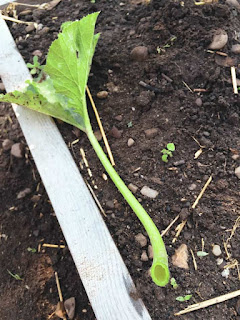Take a look at the most common mistakes when it comes to succulents and learn how to avoid them.
Overwatering
One of the biggest mistakes is overwatering. I am sure you have heard this over a million times, but still can’t stop making the same mistake. If you keep doing it, the waterlogged roots will rot, the stem will become squishy, and the leaves will fall off.
The reason for this mistakes is that on the surface, the succulent will look okay, but one day your lower leaves will become slimy and black. The roots of the succulents are very sensitive and are susceptible to root rot, so you must be careful with the watering habits! When they are actively growing drench the soil once per week, and when they are dormant, do it once a month. Let the soil dry out completely before you water them again.
Using the Wrong Container
Succulents need well-draining containers, as ones with no drainage holes will retain too much water and your plants won’t do well in them. So, whatever planter you are using, make sure it has drainage holes first. The best choices are wood, terra cotta, or hypertufa containers.
Using the Wrong Soil
Succulent roots don’t get the water from direct contact. They absorb the water molecules in the air. Succulents don’t do well in conventional garden soil, unless you water very rarely. You will need a well draining soil, so buy a succulent mix at the closest garden center, or mix your own.
Trying to Squeeze Too Many in One Space
Succulent arrangements are just a temporary decorations even though they look amazing. Succulents can take some “squeezing” better than most plants, but sometimes close becomes too close and they fight for nutrients in the end. If you have a ham packed succulent arrangement, and you find succulents withering or dying, if might be time for some separation!
Keeping Them in a Windowless Room
When you keep succulents indoors they don’t get enough sunlight. Generally, they need six hours of sunlight daily. Remember that these naturally desert plants are ideal in some of the sunniest and driest locations.
Fertilizing Improperly
Like any other plant, succulents need a variety of macro and micro-nutrients to survive. While they get along just fine without it, sometimes a bit of fertilizer can be the key to having lush and green plants.
source: https://gardeningsoul.com
























.png)
